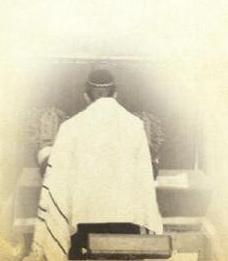A Chazzan’s Reflections on the Days of Awe
It is late in the afternoon on Tishah B’Av day. Having just spent the past several hours in shul listening to brilliant insights from Rabbis Steven Weil, Tzvi Hersh Weinreb, Jacob J. Schacter and Yaakov Glasser (yes, my son), it is time to change focus. My family members and some of my neighbors and longtime friends know what’s coming. The afternoon of Tishah B’Av, which is about fifty days before the Yamim Noraim (and twenty-two hours into the twenty-five-hour fast), is what I jokingly refer to as “test conditions” for my High Holiday davening.
For the past forty years, I have spent Tishah B’Av reconnecting with the tefillot of the approaching yom tov by reviewing the davening of the Neilah service. Neilah is known to be incredibly complex from the standpoint of nusach hatefillah (some of the liturgical musical modes have been in existence since Matan Torah), and also represents our last opportunity to pour out our hearts to Hashem. We hope and pray that we will earn Hashem’s forgiveness, while we promise to behave differently when faced with similar trials in the coming year. Neilah is a time when the Gates of Heaven are closing, and only the Sha’arei Dimah (the Gates of Tears) remain open to accept our repentance.
It is this experience that propels me into the coming weeks of preparation for the serious responsibility of serving as a shaliach tzibbur for the High Holiday season. There are two critical dimensions of preparation. One is my own cheshbon hanefesh, personal introspection, whereby I ready myself for the overwhelming responsibility of inspiring the kahal to feel the words and the music of the tefillah. I try to remember those situations where perhaps I inadvertently embarrassed or insulted someone, or was not as sensitive as I could have been. Maybe there were times when my davening was a bit too quick and lacked the necessary kavanah. My responsibility as a shaliach tzibbur begins with a serious accounting of my own personal actions and deeds.
The second dimension is the music, the words, the diction and the voice quality. During the days and weeks prior to the Yamim Noraim, I let the words of the davening flow from my lips while I am in the car (sometimes alone, sometimes not), throughout the workday and even as I walk down the street. I caress the words, review the dozens of nuschaot (liturgical musical modes) and make sure my grammar is correct. I constantly review the numerous traditional congregational niggunim, while also introducing some of the more contemporary tunes. For many congregants, the melodies sung on the Yamim Noraim bring them back to their roots. The songs they heard in the shuls they attended in their youth spiritually connect them to this time of year. What is perhaps the most challenging aspect of my preparations is making sure that I enunciate the words (and there are thousands of them) clearly and crisply. Those congregants who have limited knowledge of the machzor and find themselves counting the pages to see how many remain until the conclusion of the service tend to appreciate being able to follow the chazzan word-for-word. Although the nusach adds a glorious dimension to the davening experience on the Yamim Noraim, it is the words themselves that relate the great majesty of the King while simultaneously conveying the incredible forgiveness of Hashem, Kel Rachum Vechanun.
All this preparation culminates with the shaliach tzibbur beginning “Hi’neni,” his personal tefillah at the beginning of the Musaf service. At that moment, not a sound is heard throughout the shul as the chazzan stands before Hashem, poor in deeds, trembling and frightened, feeling terribly inadequate in representing the kahal. Weighed down by these feelings of insignificance, the chazzan, following the tefillot, calls upon the middot of the Avot and reminds Hashem of His merciful nature. He declares himself to be a sinner and prays that Hashem should not hold the kahal responsible for his sins. What an awesome role for a human being! The chazzan prays that Hashem should accept his prayers as those of “an experienced elder.” He prays that Hashem should transform all the struggles and evil into joy, gladness, life and peace. Calling upon Hashem to create such a transformation is one of the highlights of the entire Yamim Noraim service.
So what does the chazzan feel as he stands there making such an enormous request of the Ribbono shel Olam? He must feel humble and inadequate; yet, at the same time, he must muster the strength to intone the words in the traditional awe-inspiring nusach. This requires all of one’s heart and soul. It also requires that one draw upon his musical prowess to accomplish this most magnificent achievement: getting closer to the Ribbono shel Olam while bringing the congregation along. As the chazzan prays, the beautiful combination of music and words brings him to an entirely different dimension, to a place where there is hope for the future. May the Ribbono shel Olam hear our prayers and grant us a year of good health, nachat from our loved ones, peace in Eretz Yisrael and the world over and closeness to Hakadosh Baruch Hu.
Cantor Paul Glasser has conducted services on the High Holidays for forty-one years. For the last fifteen years, he has served as the shaliach tzibbur at the Young Israel of Kew Gardens Hills in Queens, New York.

